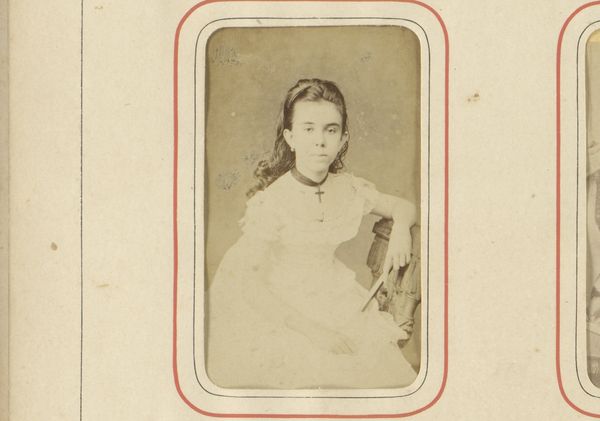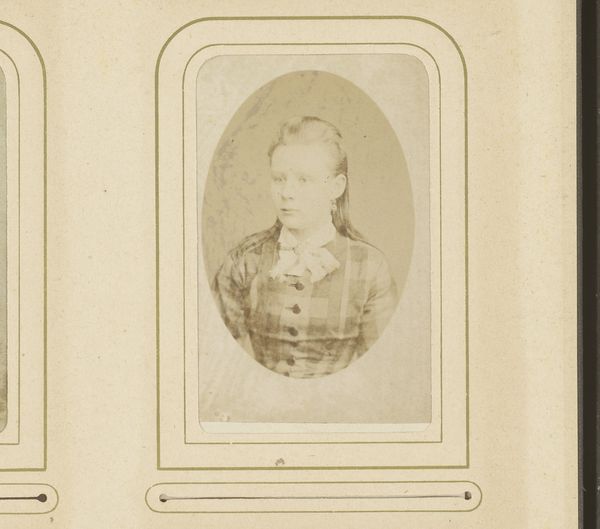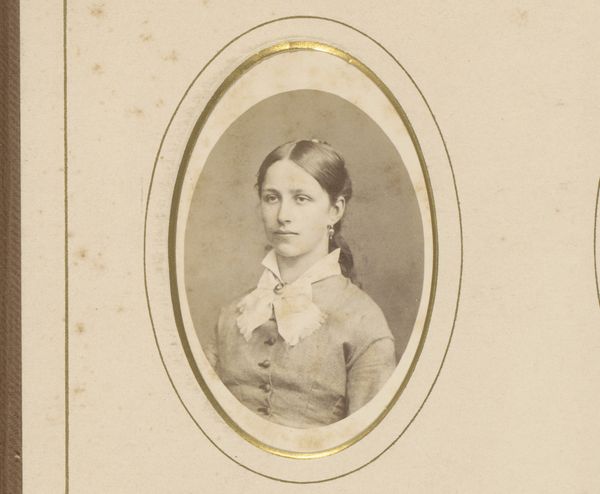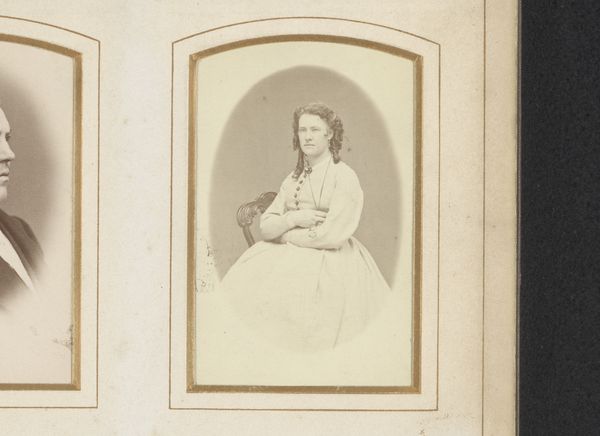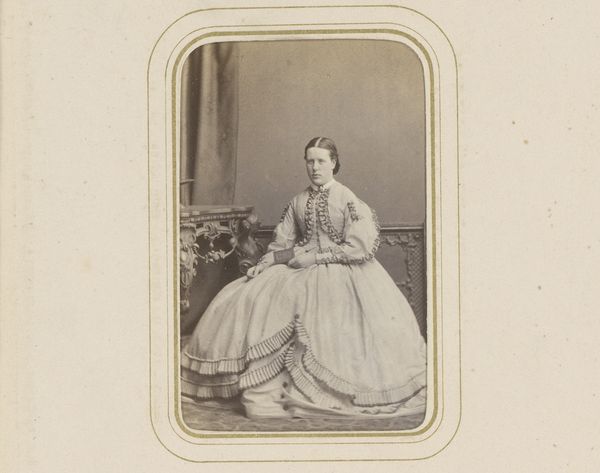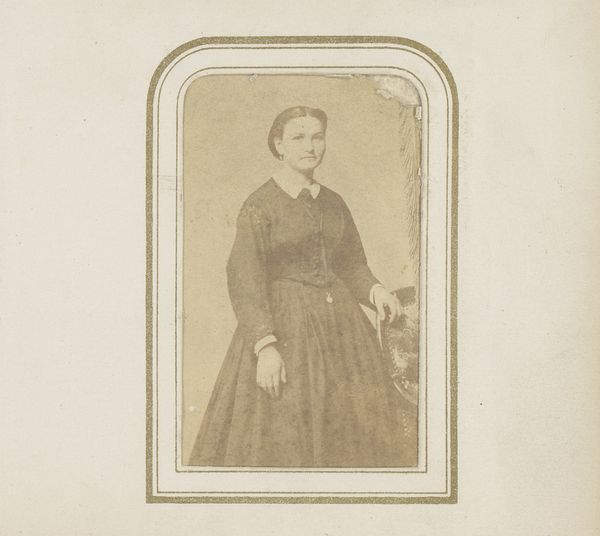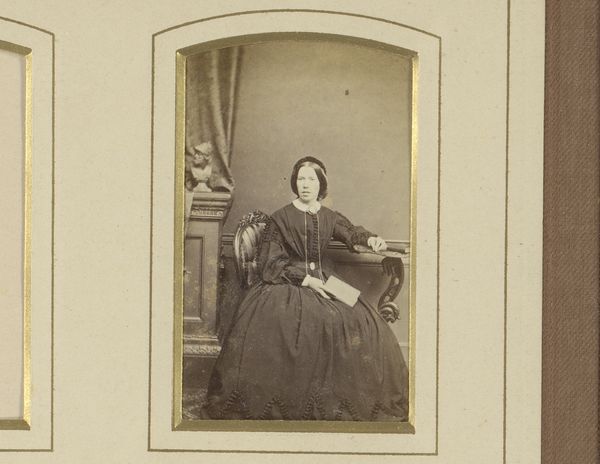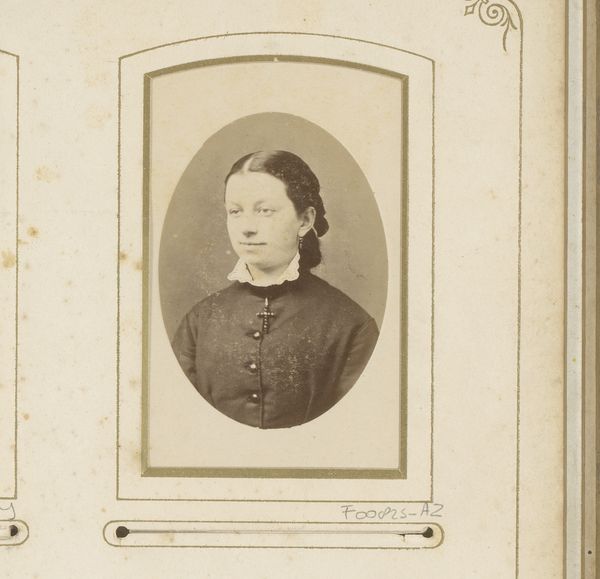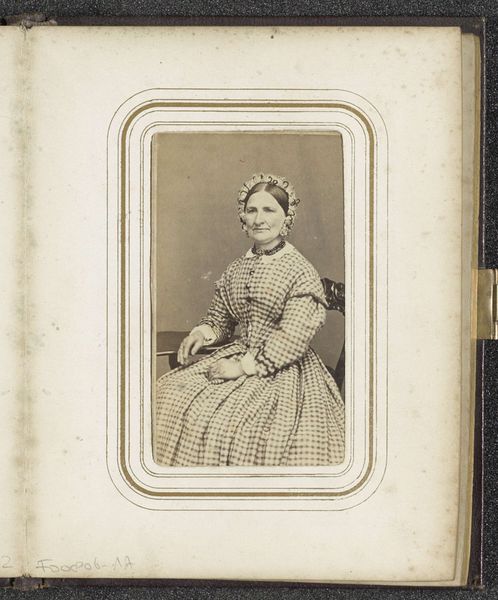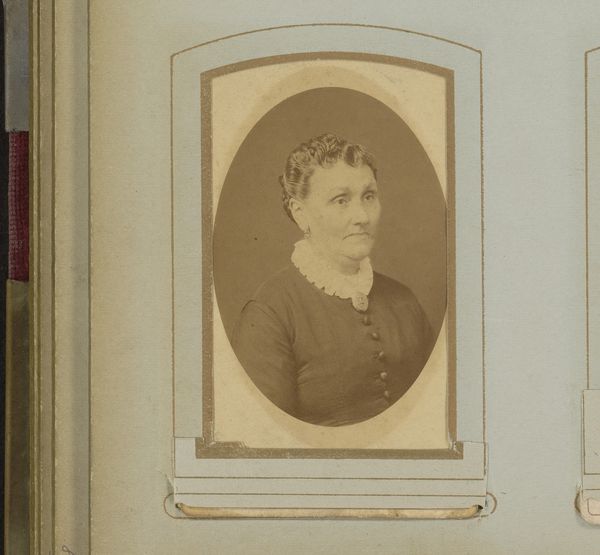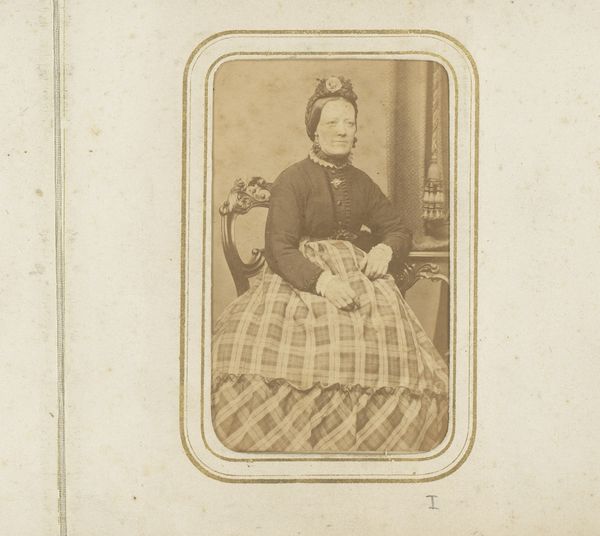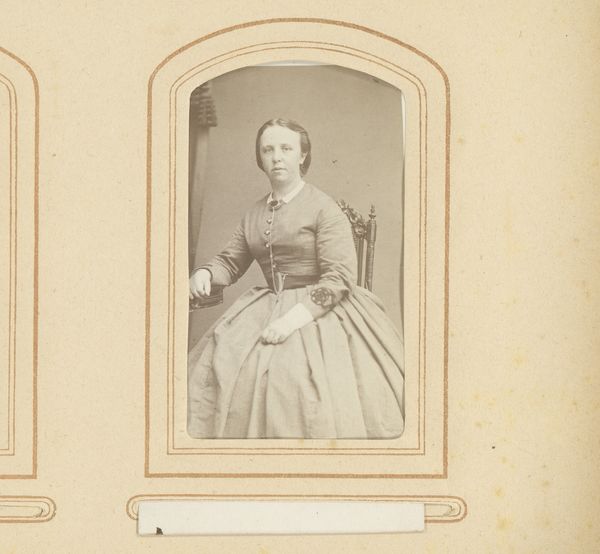
Portret van een zittende vrouw, mogelijk Amanda Hedberg 1855 - 1890
0:00
0:00
photography
#
portrait
#
photography
#
19th century
#
genre-painting
#
realism
Dimensions: height 97 mm, width 58 mm
Copyright: Rijks Museum: Open Domain
Curator: Here we have "Portret van een zittende vrouw, mogelijk Amanda Hedberg," a photograph created sometime between 1855 and 1890, attributed to Rosalie Sophie Sjöman. Editor: Wow, that's a mouthful. But first impression? It's got this eerie calm, like she’s eternally waiting for tea. The sepia tones amplify the feeling. Curator: The Realism style captures the details of the sitter's attire and the environment, placing emphasis on the middle-class sensibilities. Consider the context: photography during this period was gaining popularity, enabling access to portraiture for the bourgeoisie and expanding the modes for visual representation. Editor: True. You get a strong sense of the sitter, but I wonder what her actual thoughts were in that moment? Was she relaxed, or trying to hold it together? What was her reality? I wish portraits could whisper their secrets. The pose, it’s so composed. Controlled. Curator: Indeed. The photograph signifies not just an individual likeness but broader narratives surrounding women's roles, class, and representation. What do the tight ringlets pulled behind her ears and lace signify in relationship to other women during this time? Were their limitations or performative power found in those roles? Editor: I see what you mean! It's all a sign! Even that oval frame adds to that sensation of seeing into someone's perfectly framed life. And perhaps not a whole life, just a sliver she chose to share with the world. Curator: So, thinking about Amanda Hedberg, or whoever this person may be, is her carefully styled dress communicating social respectability, economic stability, or personal identity? Her posture, although conventional, communicates perhaps more rigidity. Or it speaks to our understanding of nineteenth-century culture. Editor: Right, maybe this wasn’t meant for casual display. Like maybe it was for distant family only to see. This image feels private in some weird way now. Curator: Considering how gender and social norms influenced her portrayal highlights those limitations, and photography became the ultimate tool. Editor: Absolutely. That rigidness maybe hides so much more. Makes me appreciate how far we've come. Curator: By viewing such pieces we are prompted to reconsider how power and visibility operate within image-making practices then, but also today. Editor: Thanks, I now want to know the sitter on a deeply intimate and silly way.
Comments
No comments
Be the first to comment and join the conversation on the ultimate creative platform.
